
glossary : s
| home | catalogue | history | references | appendix |
 |
surfresearch.com.au
glossary : s |
|
|
|
|
|
|
|
|
|
|
|
|
|
|
|
|
|
|
|
|
|
|
|
|
|
|
|




| Ski model name, originally 1968 round/rounded pin tail Tracker type design by Nat Young, about 7 ft 10” for Weber Surfboards (USA). Keyo Surfboards was Nat’s Australian manufacturer. |
 |

| Slipcheck Wave Apparatus and Vehicular Engineering PO Box 618 Ventura, California. Aerosol spray wax alternative developed by Tom Morey and Karl Pope at the innovative Morey-Pope Co. (USA) in 1965 following the popular success of Tom Morey’s Noseriding contest at Ventura. Initially only available in white (see below), it was later marketed in a wide range of colours. The most popular use was a white nose patch (tip to sweet spot). See Tom Morey's Noseriding Contest 1965  Grip Feet was a (possible) Australian variation. Noted in a Surfing World and Surfabout magazine advertisements, circa 1965... Nose ride graphic and address 53 Bay Road, Taren Point, Phone 525-0795 |
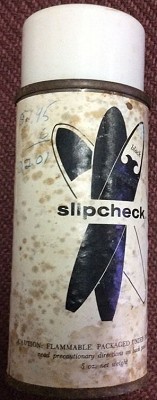 |
 |
| 2.
SLIPCHECK. A fine textured coating for the nose or tail of your board which is so firm when wet it completely eliminates slipping. Apply SLIPCHECK once, touch up occasionally. For sale in white only. One can, $3.50, is more than enough for initial coat plus touch ups. Include 40c postage and tax with your order. |
 |
 |
featuring David Nuuihwa. Surfer Magazine circa 1967. |



| step bottom/stepped
bottom design feature, see Hydroplane, Stinger. Sea Horse Surfboards
circa 1974 |
 |



| SUP -Stand Up Paddleboard
COUNCIL BANS SUPs. At last week's meeting of the Kiama Council, a ban was placed on SUP's (Stand Up Paddleboards) at Seven Mile Beach. A council representative said the action was in response to numerous complaints by residents, local boardriding clubs and surf schools. Many objected on grounds of safety and the domination of the waves by SUP riders, the term "wave hogs" was often used. However, most complaints were best described as 'aesthetic,' such as "clumsy," "completely devoid of style," and "a floating windmill." Several councillors personally confirmed these observations, and the motion was passed unanimously. - KIAMA ENQUIRER, Monday 1 April, 2013. |
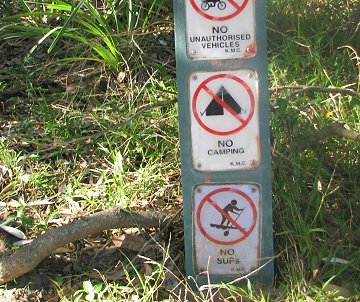 |

| Surf
Permit
/ registration sticker circular vinyl sticker (usually white, indicating council area, year by date and print colour, and stamped serial number) issued by Sydney beach side councils 1962 – 1968 as a reaction to public concerns about safety. Left: Randwick 1968-1969,No. 1540 on Shane Malibu #120. Valid only for the beaches of the issuing council and policed by beach inspectors and surf club members (sometimes resulting in confiscation) the system was reviled by boardriders. Perversely the stickers are now highly prized by surfboard collectors. A similar system was in use in the US at this time. Circa 1969 a similar design Surf Craft Permit was used to identify members of N.S.W. Surfriders Association.PO Box A162 Sydney South. eg, San Juan board circa 1969, Permit No:1141 in Blue and white. See: 1963 Sutherland Shire Council : Surf Craft Regulations. |
 |
| Manly | Warringah | Waverly | Randwick | Sutherland |
| 1960-1961 : 1961-1962 : 1962-1963 : Blue 1963-1964 : Teal 1964-1965 : Red 1965-1966 : Orange 1966-1967 : Blue 1967-1968 : Blue 1968-1969 |
1960-1961 : 1961-1962 : Red 1962-1963 : Blue 1963-1964 : Green 1964-1965 : Orange 1965-1966 : Red 1966-1967 : Blue 1967-1968 : 1968-1969 |
1960-1961
: 1 961-1962 : Red 1962-1963 : 1963-1964 : 1964-1965 : Orange 1965-1966 : 1966-1967 : 1967-1968 1968-1969 : Red |
1960-1961
: 1961-1962 : 1962-1963 : 1963-1964 : 1964-1965 1965-1966 : 1966-1967 : Light Blue 1967-1968 : Blue 1968-1969 : Red |
1960-1961
: Yellow 1961-1962 : Red 1962-1963 : Blue 1963-1964 : Green 1964-1965 : Orange 1965-1966 : Red 1966-1967 : 1967-1968 : Green 1968-1969 |
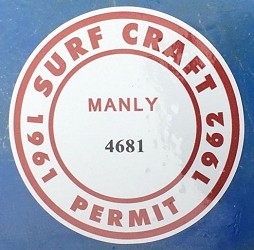 Manly 1962-1963 |
 Manly 1962-1963
Photograph
courtesy of Paul Flack.
|
|
 Manly
1964-1965
|
 Manly
1965-1966
|
 Manly 1966-1967
|
 Manly 1967-1968
|
 |
Warringah 1961-1962 Warringah 1963-1964 |
 |
|
Warringah
1964-1965
Image contributed by Martin,
April 2012.
|
 |
 |
 |
Warringah 1966-1967 Image contributed by Martin, June 2012. |
 |
||
| Randwick 1963-1964 | Randwick 1964-1965 | Randwick 1965-1966 |
 |
 |
 |
|
Image contributed by Noddy S., May 2014. |
Image contributed by Jonno, September 2011. |
|
 Sutherland 1960-1961  Sutherland 1963-1964  Sutherland
1966-1967
|
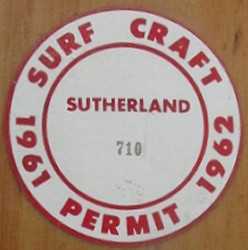 Sutherland 1961-1962  Sutherland
1964-1965
 Sutherland 1965-1966 |
 Sutherland
1962-1963
 Sutherland 1965-1966  |
 Waverley 1960-1961 |
 |
 Waverley 1962-1963 |
 Waverley 1964-1965 Image contributed by Lisa Stevens, March 2009. |
 Waverley 1968-1969 |
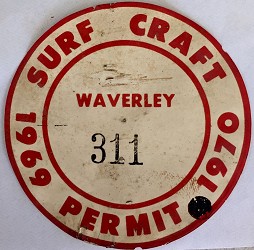 Waverley 1969-1970 |
|
NSW Surfers
Association, c1967.
PO Box A162 Sydney South |
 NSW Surfers Association, c1968. PO Box A162 Sydney South |
 Surf Life Saving Association G.B. 1971-1972 |
| |
| Surf Research Manufacturer of Waxmate surf wax and the Fin-Lifter, for full entry, click here. Also see: The House of Wax and the Fin Catalogue |
 |

|
|
|
|
|
|
|
|
|
|
|
|
|
|
|
|
|
|
|
|
|
|
|
|
|
|
|
| home | catalogue | history | references | appendix |